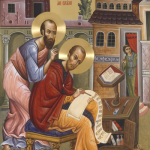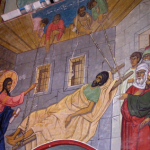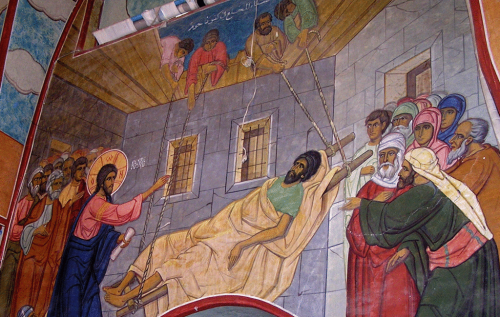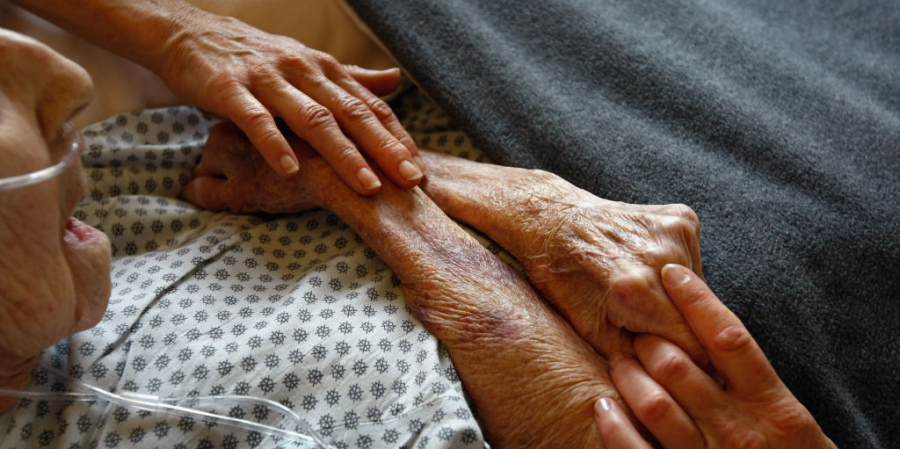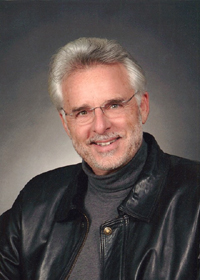Deprecated: trim(): Passing null to parameter #1 ($string) of type string is deprecated in
/home/aoiusa/public_html/wp-content/plugins/sexybookmarks/public.php on line
388
Deprecated: trim(): Passing null to parameter #1 ($string) of type string is deprecated in
/home/aoiusa/public_html/wp-content/plugins/sexybookmarks/public.php on line
394
Deprecated: trim(): Passing null to parameter #1 ($string) of type string is deprecated in
/home/aoiusa/public_html/wp-content/plugins/sexybookmarks/public.php on line
400
By John G. Panagiotou
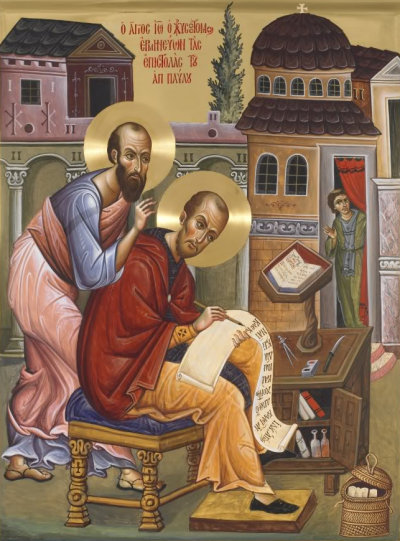
The Holy John Chrysostom
interpreting the epistles of the Apostle Paul
In the New Testament, the Apostle Paul writes to his spiritual son Timothy about the “deposit of faith” (in Greek, paradosis) which has been handed down from Christ to His Apostles, to their disciples and to their successors.1 What is this “deposit” in its essence? The Apostle tells us this is the “Good News” or “Gospel” (in Greek, evangelion) of the incarnate, crucified and resurrected Jesus. This is the simple and redemptive message of the Gospel: the mystery of the Holy Trinity, the Second Person of the Trinity became man, and that “He the Christ is Risen!”
On a reasonable level, one would think that the simplicity of this message would resonate clearly with all Christians — divisions and disunity would just evaporate. Yet, this was neither the case in Apostolic Times nor is it the case in the present.
Over the last thirty years, there has emerged a tension and a resulting estrangement between “charismatic theology” and “academic theology”. The former emerging from within the monastic circles of piety and the latter emanating from the universities and seminaries. Occasionally, we have seen the adherents of both come to loud discord and sadly in some circumstances ecclesial schisms.
In both circumstances, either of these two positions carried to their extremes are not within the historic Apostolic Tradition. The very Tradition to which both sides seek to defend as “Orthodox” is found in a balanced expression that is present within both the charismatic and the academic represented in their fullness and harmony.
Throughout Church history, we find countless examples of conflicts within the Church. Yet, it is precisely the “linchpin of sound faith and doctrine” that St. Ignatios of Antioch writes about that carries on the notion of the “deposit of faith”.2 As St. Iranaeus of Lyons writes, “unity in the essentials, diversity in the opinions.”3 Consider two examples:
- Both Apostles Peter and Paul argued bitterly over the issues of adherence to Old Testament Judaic practices for the fledgling first century Christian communities both Jewish and Gentile.4
- St. John Chrysostom, St. Basil the Great and St. Gregory Nazienzen came into conflict over matters of what is proper engagement of and discharge of church governance in the fourth century.5
Here we see how the great leaders of the first century Church and the fourth century Church were often at odds on matters of faith expression and ethical conduct. In spite of these divergences, the unity of faith found in the Person of Jesus was never questioned by these saints of God.
We do not worship a creed, doctrine, church, book, philosophy or theology. This is the basic error of the both the “charismatic” and “academic” extremists. To say that one follows exclusively an ascetic no matter how pious is wrong. To say that one follows exclusively a professor no matter how erudite is equally as wrong. We worship a Person — Jesus Christ. For it is in the Person of Jesus, the Divine Logos, that we are introduced to and commune with the Holy Trinity.
The need today for authentic Orthodox Christianity to be expressed is for one to espouse an ethos of holiness while maintaining a mindset (in Greek, phronema) of intellectual understanding. Orthodox Christianity is best expressed in its fullness when the monastic (charismatic) spirituality guides the ethos of the heart and the academic (intellectual) theology guides the head. Without this balance, it has become increasingly clear that the Church today will not find itself true to Her Apostolic calling and will be relegated to increasing irrelevance and marginalization in the greater culture.
St. Symeon the New Theologian understood this balance in the 11th century. Symeon was an erudite theologian who taught that theology of the head without theology of the heart was empty. The Holy Spirit within the life of the Christian as well as the theologian was crucial to authentic spiritual life.6 It was this emphasis which brought him into conflict with the Church hierarchy, namely the chief theologian of the Byzantine emperor’s court, Metropolitan Stephanos of Nicomedia.7 This conflict came at a time when such discourse was seen as revolutionary and explosive in the Church. The Church was facing deep secularizing influences during that time similar to what the Church is facing today.
Archbishop Stephanos had an excellent theoretical understanding of theology, but it was devoid of actualized spiritual experience. Symeon, on the other hand, emphasized the one must have an actual experience of the Holy Spirit in one’s life (the Divine Light of illumination) that is consonant with the Scriptures and the writings of the Patristic Church Fathers.8 He would also temper the “experience of the divine light” with the necessity of fraternal correction by a spiritual father.9
This debate raged and ended with Stephanos convening a spiritual court by the Synod against Symeon and accusing Symeon of heresy. The Synod and condemned into exile; he was abandoned by the hierarchy without food in the midst of winter.10
Even in the world’s eyes, a great injustice suffered by St. Symeon at the hands of his enemies in the Church, was ultimately his greatest opportunity for witness. For it was through Symeon’s emphasis on the spiritual experience of the Holy Spirit that a great “spiritual awakening” and renewal would take place on Mt. Athos and throughout the Byzantine Empire.11 This witness of the charismatic and the scholastic synthesis of St. Symeon the New Theologian continues to this day. As we are faced with today’s challenges and permutations, we should consider St. Symeon’s balance between the charismatic and the academic as solutions to today’s problems.
In speaking of this Patristic theological fronima, the late theologian John S. Romanides wrote:
When Holy Scripture says, ‘man is saved by faith alone’ (Ephesians 2:8), it does not mean that he is saved merely by acceptance. There is, however, another kind of faith, the faith of the heart. It is referred to in this way because this kind of faith is not found in the human reason or intellect, but in the region of the heart. This faith of the heart is a gift of God that you will not receive unless God decides to grant it. It is also called ‘inner faith’…Inner Faith is rooted in an experience of grace…Inner faith is noetic prayer. When someone has noetic prayer in his heart, which means the prayer of the Holy Spirit in his heart, then he has inner faith.
Through this kind of faith and by means of prayer, he beholds things that are visible. When someone has this kind of vision, it is called theoria. Theoria, in fact means vision…this inner faith (i.e. prayer of the heart) and hope are set aside, and only love for God remains (as a gift of God)…When the perfect is come, faith and hope are done away, and only love remains. And this love is theosis…This experience of theosis is the core of the Orthodox Tradition, the foundation of the local and ecumenical councils, and the basis for the Church’s canon law and liturgical life today. If the contemporary Orthodox theologian is to acquire objectivity, he must rely on the experience of theosis.12
What Romanides says beautifully epitomizes the proper and healthy solution to the dilemma of the “Fundamentalist” and academic debate. At once, it is all diminished as a straw-man argument within the context of Orthodoxy. In Orthodox Tradition, there is only that what has been handed down from the Apostles. To be sure, in 2,000 years, there have been arguments, schisms, developments, changes in practice, but what remains the same is: One Lord, One Faith, One Baptism.13 That is what remains. That is all that matters. That is what we should be vigilant to call to mind.
No monastic, professor, hierarch, clergy or layman alone has the corner on Truth. Christ can reveal Himself to the humblest of uneducated fishermen such as the Apostles Peter, James and John. Christ can also reveal Himself to the most well-educated scholars such as Sts. John Chrysostom and Basil the Great. The same Jesus is Lord of all.
Who are we to think that we can create such artificial dichotomies such as we have? The reality is that the charismatic needs the academic and the academic needs the charismatic. The two are not mutually exclusive, but rather they are complementary and symbiotic. As the fourth century Desert Father and theologian Evagoras Pontikos would sum this up perfectly when he wrote, “A theologian is one who truly prays and one who prays is a true theologian.” 14 A rejection of this balance and a continued acceptance of the extremes one way or the other would seem to posit a de facto apostasy from the One Holy Catholic and Apostolic Church.
It is crucial today more than ever that the 21st century Church seeks this balance in the monastery, parish, university, seminary, and most importantly in the home. It is not an option, but rather a matter of spiritual stewardship. Most appropriately, it is only His love, mercy and grace which can give us the strength for the difficult tasks which await us on the journey ahead.
ENDNOTES
- 2nd Timothy 1:13-14
- Ignatios of Antioch’s Letter to the Epeshians 20 and Letter to the Trallians
- Eusebius’ Ecclesiastical History (chapters 23-25)
- Acts of the Apostles 15
- McGuckin, John (2001) Saint Gregory of Nazianzus: An Intellectual Biography, Crestwood, NY: St. Vladimir’s Seminary Press.
- deCatanzaro, C.J.; Malony S.J., George (1980). Symeon the New Theologian: The Discourses Paulist Press, p. 2.
- Krivocheine, Basil; Gythiel, Anthony P. (1986). In the Light of Christ: Saint Symeon the New Theologian (949-1022). St. Vladimir’s Seminary Press, pp. 44-45.
- deCatanzaro, 1980, p. 2.
- Turner, H.J.M. (2009). The Epistles of St. Symeon the New Theologian. Oxford University Press, pp. 53-54.
- Whitacre, Rodney A. (2007). A Patristic Greek Reader. Hendrickson Publishers, p. 188; Krivocheine (1986), p. 53.
- Turner (1990), pp. 247-8.
- Romanides, John S., Patristic Theology: The University Lectures of Father John Romanides. Thessaloniki, Greece: Parakatatheke Publications (2004) and Uncut Mountain Press (2008), pp. 92-4.
- Ephesians 4:5
- Evagrius, Evagrius of Pontus: The Greek Ascetic Corpus. translated by Robert E. Sinkewicz, (Oxford and New York; Oxford University Press, 2003); Evagrius Ponticus: Praktikos and On Prayer. translated by Simon Tugwell, (Oxford: Faculty of Theology, 1987)

John G. Panagiotou is a graduate of St. Vladimir’s Orthodox Theological Seminary and Wheeling Jesuit University. He can be reached at johnpan777@gmail.com.
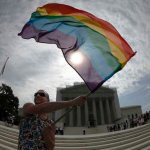
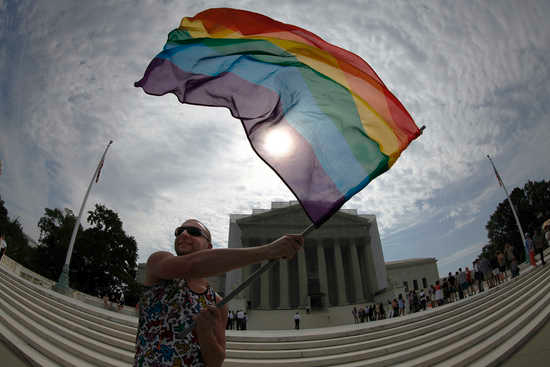 The video below makes the claim that human sexuality is more fluid than many believe. It’s a controversial point since it challenges the thesis that homosexual desire is a fixed component of individual identity, what in theological terms represents a profound shift in anthropology, and in sociological terms is known as ‘gay self-identified.’
The video below makes the claim that human sexuality is more fluid than many believe. It’s a controversial point since it challenges the thesis that homosexual desire is a fixed component of individual identity, what in theological terms represents a profound shift in anthropology, and in sociological terms is known as ‘gay self-identified.’ 
